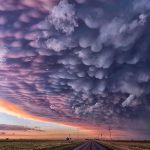Key Takeaways
- The Ring Nebula is a stunning interstellar cloud, known for its ring-like appearance.
- It is a planetary nebula, formed from the remains of a star that has become a white dwarf.
- Discovered in 1779, it is part of the Summer Triangle constellation and located approximately 2,300 light years away from Earth.
- The nebula has complex internal structures, resembling footballs, doughnuts, and knots with tails.
- The Hubble Telescope has provided detailed images of its intricate composition.
The Ring Nebula, an awe-inspiring interstellar cloud, has captivated astronomers and stargazers alike with its striking ring-like appearance. Its beauty lies in the fact that it is Earth-facing, allowing us to witness the full extent of its circular structure. The nebula takes its name from this characteristic feature, with several rings of varying sizes seemingly stacked one after the other, emanating from the tiny white circle at its center. However, its actual internal structure is far more complex than its name suggests, with intricate shapes resembling footballs, doughnuts, and knots with tails, leading some to describe it as a “bicycle wheel” nebula.
Located in the constellation Lyra, the Ring Nebula lies at a distance of approximately 2,300 light-years from Earth. It is part of the famous Summer Triangle, formed by the stars Vega, Deneb, and Altair, and is easily visible in the northern sky during the summer months. The nebula boasts incredible luminosity, estimated to be up to 100 times brighter than our Sun, and it has a scorching temperature of over 100,000 kelvin, making it much hotter than our own star.
Discovered independently by French astronomers Antoine Darquier de Pellepoix and Charles Messier in 1779, the Ring Nebula is officially designated as Messier 57 (M57) or New General Catalog (NGC) 6720. It was the observation of a nearby comet called the Comet of 1779 that helped these astronomers identify and document this breathtaking celestial object.
The Ring Nebula is classified as a planetary nebula, a term derived from early astronomy when telescopes were not powerful enough to distinguish between the shape of planets and nebulae. Contrary to its name, the nebula is not a planet but rather the remnants of a star that underwent a red giant explosion, shedding its outer layers and leaving behind the central white dwarf. Astronomers estimate this explosion occurred between 6,000 and 8,000 years ago, and the nebula is still expanding at a rate of 1 arc second per century or roughly 20 to 30 km/second.
The Ring Nebula’s composition is equally fascinating, with an inner ring of helium gas surrounded by rings of oxygen and hydrogen, all encompassed by an outer ring of nitrogen and sulfur gases. This intricate arrangement is a result of the stellar winds blowing through the gaseous rings, interacting differently with gases of varying densities. Thanks to the Hubble Telescope, scientists have been able to study the nebula in unprecedented detail, enhancing images to reveal the intricacies of its structure and interactions between gases. As one of Charles Messier’s more renowned discoveries, the Ring Nebula remains a popular target for amateur astronomers, providing a mesmerizing celestial spectacle and a testament to the beauty and complexity of our universe.
Read full article on The Planets
#1

Credits: NASA, ESA and the Hubble Heritage (STScI/AURA)-ESA/Hubble Collaboration
#2

Author: The Hubble Heritage Team (AURA/STScI/NASA)
#3

In this composite image, visible-light observations by NASA’s Hubble Space Telescope are combined with infrared data from the ground-based Large Binocular Telescope in Arizona to assemble a dramatic view of the well-known Ring Nebula. Image Credit: Credit: NASA, ESA
#4

Ring Nebula (M57, NGC 6720) in the constellation Lyra, a planetary nebula consisting mainly of gases thrown off by the star in the centre. Courtesy of Palomar Observatory/California Institute of Technology
#5

M57 Credit: André van der Hoeven, Terry Hancock, Fred Herrmann, Mike van den Berg and Mathijn Ippel, The Netherlands/USA. Equipment: Celestron C11 with SXV-H9, Astro-tech 12″ RC with SBIG STT-8300, Astro-tech 12″ RC with QHY-9, Planewave 12,5″ with SBIG ST-11000, Planewave 17″ with SBIG ST-11000
#6

M57 Ring Nebula by Martin Pyott, St Andrews, Fife, UK. Equipment: LUNT 80mm ED Refractor, ZWO ASI 120 MC-S CMOS Planetary webcam.
#7

Ring Nebula, M57 by Ronald Piacenti Junior, Padre Bernardo, Goias, Brazil. Equipment: Celestron XLT C6 Schmidt Cassegrain, SkyWatcher HEQ5Pro Mount, ZWO ASI174MC camera.
#8

Discovered by Charles Messier on January 31, 1779.
#8



